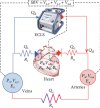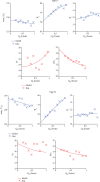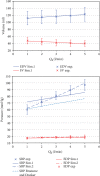Model-Based Weaning Tests for VA-ECLS Therapy
- PMID: 32328151
- PMCID: PMC7165357
- DOI: 10.1155/2020/4503919
Model-Based Weaning Tests for VA-ECLS Therapy
Abstract
Venoarterial extracorporeal life support (VA-ECLS) is used in ICUs (intensive care units) for the most extreme presentations of acute and severe cardiogenic shock, and one of the main issues the clinicians have to deal with is the weaning from VA-ECLS. In this study, a patient-specific model of the cardiovascular system connected to a VA-ECLS is built to improve the understanding of this complex system. Pig experiments are performed to validate the model, and the results are quite promising since the mean difference between experimental data and simulation is smaller than 5% for all the hemodynamic quantities. It is also a major objective of this paper to provide a proof-of-concept analysis that model-based approaches could improve the weaning strategy for VA-ECLS therapy.
Copyright © 2020 Simon Habran et al.
Conflict of interest statement
The authors declare that there is no conflict of interest regarding the publication of this paper.
Figures





References
Publication types
MeSH terms
LinkOut - more resources
Full Text Sources

